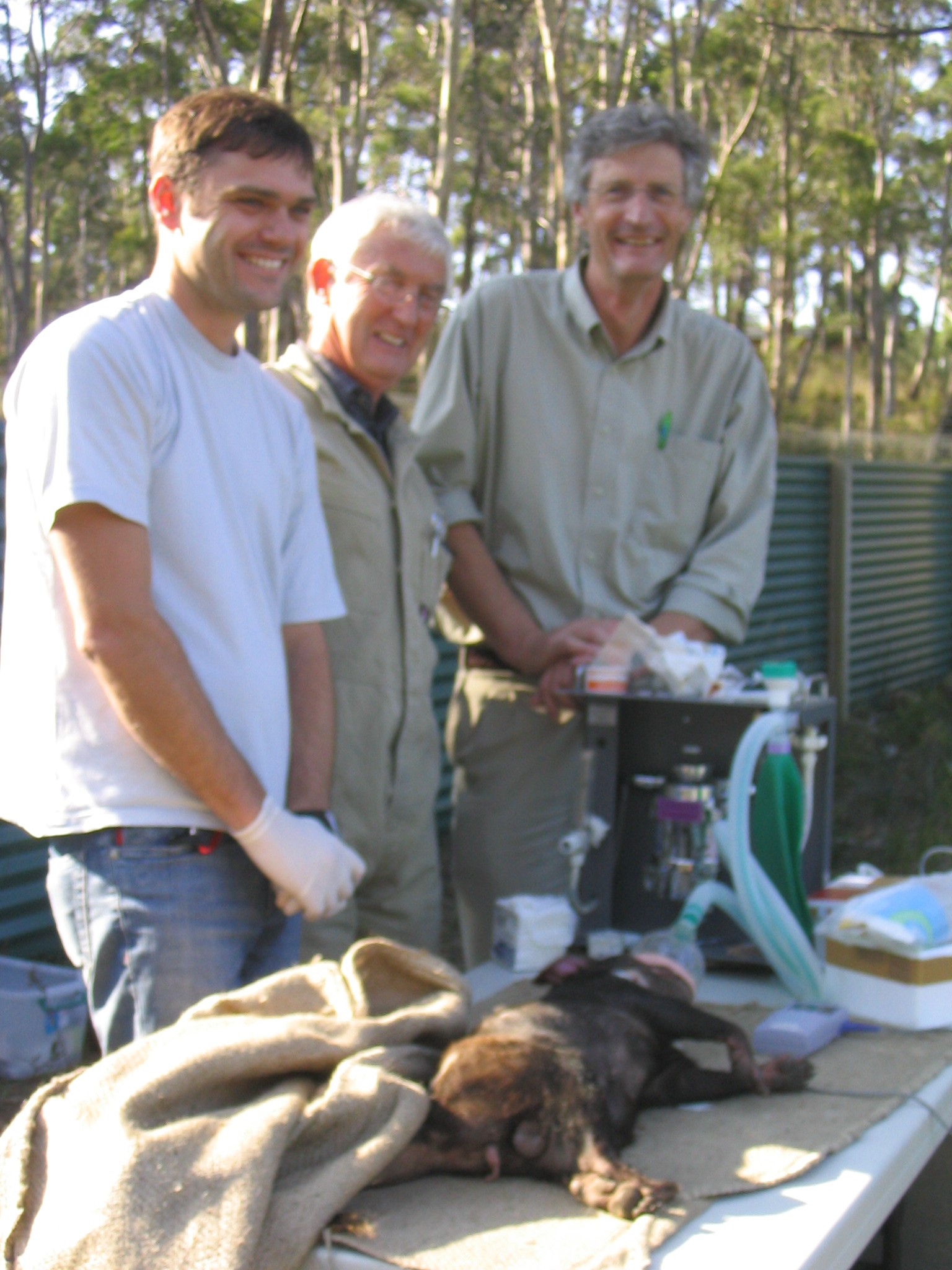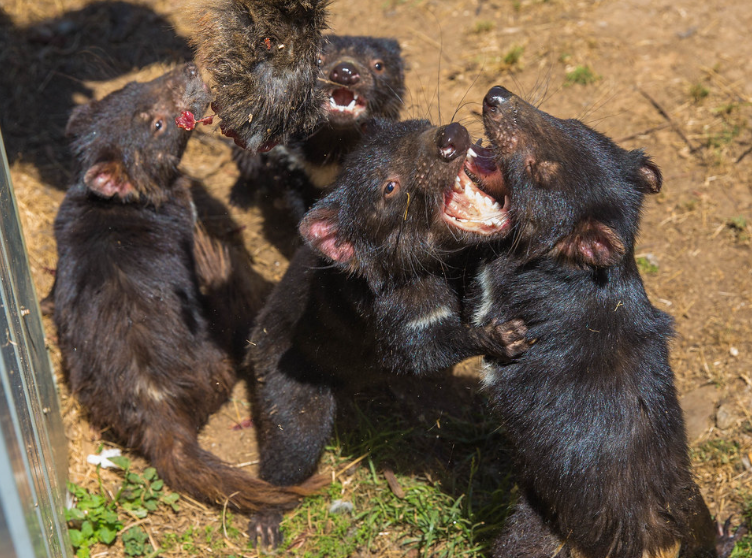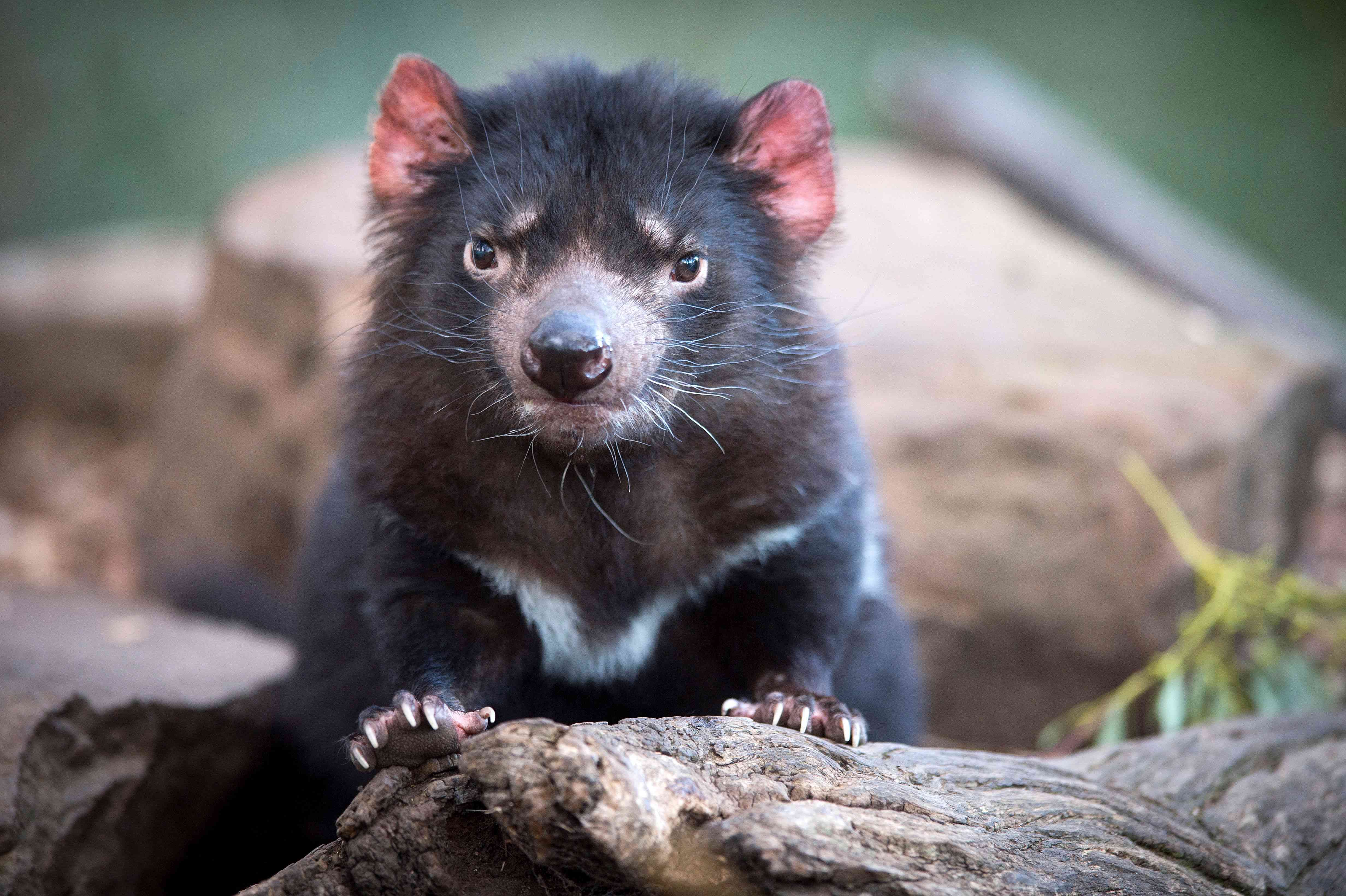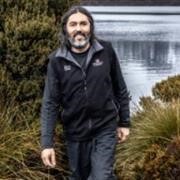As we look back on 21 years of fundraising to protect the Tasmanian devil from Devil Facial Tumour Disease (DFTD1 and DFTD2), it is a good time to highlight some of the critical work undertaken in the early days.

PhD Student Alex Kreiss and
veterinarian Dr Barrie Wells
In 2006, immunologist Professor Greg Woods began been working on Devil Facial Tumour Disease (DFTD) at Menzies Institute for Medical Research (Menzies). While he officially retired in 2017, Greg is still working on the project as an Adjunct Professor.
What began as a 'side of the desk' project with PhD Student Alex Kreiss and University veterinarian Dr. Barrie Wells has now grown into a significant team working to understand the immune system of Tasmanian devils and why they cannot ‘reject’ DFTD.
Though it started as a small project with limited resources, the current team has expanded and is dedicated to a common goal: creating a vaccine for DFTD.
While devils were sighted in the wild in North East Tasmania as early as 1996 with what appeared to be facial tumours, it wasn’t until 2006 that work began in earnest for Professor Woods.
“We had a look at a few devils because we just wanted to see why the devil’s immune system wasn’t killing the cancer, because it should. There were two possibilities: Something to do with the devil’s immune system or something to do with the cancer.
We investigated the devil’s immune system. We ran some basic tests and found that the devil’s immune system was competent – so it had to be something to do with the cancer.”
DFTD is extremely unusual because the tumours are transmissible. That is, devils give the tumours to each other. How does this happen – and why the Tassie devil?
The combination of three factors lead to ideal conditions for DFTD to spread.
Firstly, DFTD started in the face of one devil. The cell that DFTD originated from was one that the immune system doesn't usually recognise – a Schwann cell.
These cells are part of the nervous system, and when you have an infection, the immune system reacts and starts killing the infected cells - but you don’t want to kill your nerve cells. So the Schwann cells don’t induce a strong immune response .”
Secondly, there was also a lack of genetic diversity within that population in the far North East of Tasmania. Their genetic makeup is similar, so there is a greater likelihood that the devil’s immune system will not recognise the Schwann cells as foreign.
And finally, somehow the cancer has to move from one animal to another.
If you have ever seen devils feeding, you will have seen that devils are very territorial when it comes to their food. They fight hard for their meals, and they will attack each other to protect their food. They will bite each other in the face, and that is how the cancer is transmitted between animals. So, the behaviour of the devils is an ideal vehicle for the disease to spread.

“The initial work was to see if the immune system was effective, and if it was, was there some way we could trick the immune system to react against the cancer? If that was the case, we could take the next step which would lead to a vaccine,” says Professor Woods. “We eventually got a response, and now the challenge was to find out which part of the tumour cells the devil immune system is recognising the cancer.”
Where is Menzies research at now?
Tumour antigens are proteins that are found only on cancer cells. These can help the body make an immune response against cancer cells.
The work that Dr Andy Flies is doing is, in part, addressing the issue of how to get the antigens to devils. The best way to do this is through an oral bait. Thanks to the support of our devil community, donations to the Devil Appeal have allowed the construction of enclosures to test a vaccine on land provided by Greg Irons at Bonorong Wildlife Sanctuary in Southern Tasmania.

The discovery of DFTD2
In 2016, a landowner in the Channel region of Southern Tasmania reported that he had a devil on his property with lesions on his face. Prior to that, DFTD had only been found in devil populations no further south than Hobart.
PhD student Ruth Pye trapped the devil and took some of its cells. The test results came back saying it was DFTD.
But further analysis showed that it was a different cancer altogether and has been named DFT2. Both cancers are from Schwann cells but are genetically different. This shocked Professor Woods. “We thought it may have been just one occurrence. But it is not, and sadly, it’s moving through the southern population.”
Dr Rodrigo Hamede is out in the field working with landowners – trapping and monitoring devils. His work is focusing on the evolution of the tumour, and where it is spreading.
“We are starting again, but with a bit of knowledge. We also have more resources. Before we started, there was Menna Jones and Rodrigo Hemede, but now there is a group in Mt Pleasant with the Department of Natural Resources doing histology studies, and people all over the world are working on it.
In the 21 years since the first donation was made to support the work to fight against DFTD, $7.5 million has been donated to the University by the devil community.
While there has been a significant support from government and other partners, it is the smaller donations, made by individuals and organisations, that has enabled Professor Woods and other University of Tasmania researchers that have assisted in continuing the momentum and to keep the work going.
Donations made to Save the Tasmanian Devil Appeal has enabled Professor Woods and fellow University of Tasmania researchers to produce preliminary results that have, in turn, lead to larger funding.
Generous support from donors has played a significant role in advancing research on the devil and the cancers that are affecting the species. Although there is still more work to be done, researchers now have a better understanding of the devil and its cancer.
Together, we have given our devil a fighting chance.

Image credit: Tourism Tasmania and Rob Burnett
If you would like to make a donation to our Save the Tasmanian Devil Appeal, be assured that 100% of your gift will support the work of our researchers.
Top right image: Professor Greg Woods





